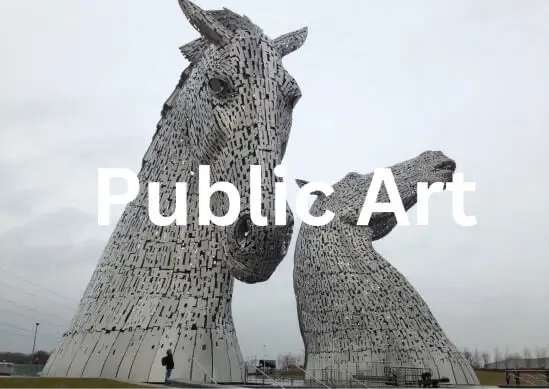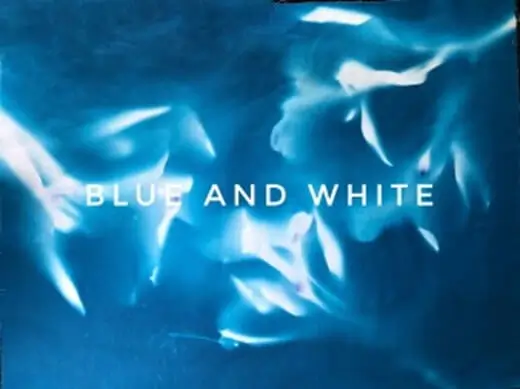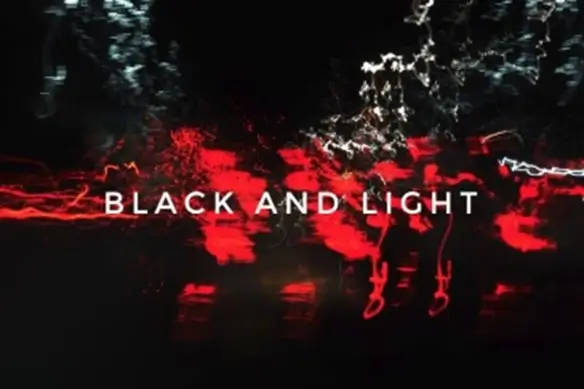How do you like your photography? With or Without ….? (A camera or rules)
Elaine Vizor
Runs from: Saturday 04 May 2024 to Thursday 13 June 2024
The title ‘With or Without’ (a camera or rules) is inspired by the quintessentially English love of tea and the all-important question of, ‘how do you like your tea, with or without ….?’ So, ‘how do you like your photography, with or without ….?’ And like a good Afternoon Tea, this exhibition is in three tiers, and you can decide which to tackle first.
The word photography is made from two Greek words, photo (light) and graphy (write). Translated literally photography means writing with light and this precedes the use of a camera. This body of work demonstrates different ways of capturing light, with a camera and without a camera, with rules and without rules, and is in three contrasting but complementary parts as each part is grounded in making pictures with light.
CYANOTYPES comprises of ‘photograms’, mainly ‘blue and white’ pictures created with the 19th Century cyanotype printing process. This early form of cameraless photography dates back to 1843 when the first ever photographer and botanist, Anna Atkins, using Sir John Herschel’s 1842 blueprint process, prolifically produced botanical prints and the first ever photobooks, with volumes of her work later donated to the Royal Society despite not being allowed to be a member due to being female. The cyanotype process involves using light sensitive chemicals coated on surfaces, such as paper, card or fabric; placing objects in contact with the surface and exposing in sunlight (or nowadays also UV light). Most of the cyanotype pieces displayed were created with FOUND OBJECTS, often discarded, preloved or recyclable materials, each created with symbolic meaning or metaphor to challenge, celebrate, commemorate and communicate. Though John Herschel’s use of his invention was mainly for diagrams which became ‘blue prints’; the first photograms were made with lace and then extensively botanical species. The process was extended in 2015 when ‘Wet Cyanotypes’ were developed by departing from the traditional process and adding elements, such as salts and magnesium flakes to the coated surfaces when the chemicals are either dry or wet, resulting in a different type of image, often less literal or pictorial and more abstract art like pictures emerging from the more unpredictable process.
PAINTINGS WITH LIGHT is a display of night images created with a camera and with a conscious absence of the usual rules of photography. That is, images created on long exposures, without the steadying aid of a tripod whilst deliberately allowing the camera to move to the motion of a moving vehicle, the pace of walking, or just the rhythm of the human heartbeat and breathing. Inspired originally by a large scale abstract painting titled ‘Rivulets of Red’, the rationale behind this process is to produce abstract ‘black and light’ images of shifting light at night, or in dark places, as if paint dripping on a black canvas. The paintings with light are with the sole use of a handheld camera, without the use of conventional light painting tools and, as with all artwork, are open to the varying perceptions of viewers. The display opens and closes with traditional rule based light trails, from Darlington to London, to illustrate the contrast.
PUBLIC ART refers to art that is in the public realm and is therefore accessible to the public, to interaction and engagement. Generally speaking, a work of art cannot be considered as ‘public art’ if it is not one-of-a-kind or an original (in the case of sculpture or painting). Public Art pieces often tell a story, though also can be enigmatic and create curiosity as to what they are or indeed why they are where they are. They spark much debate too about their purpose, funding, indeed their point but also much appreciation. Public Sculptures often celebrate local people, a war hero, sports person, royalty or celebrity. They also provide access to local history and heritage and provide a bridge between the past and the present. Sculptures can keep the past alive by their very presence in a neighbourhood. My love for Public Art arose when I was fortuitously able to photographically document the manufacturing of County Durham’s tallest sculpture, Joseph Hillier’s ‘In Our Image’, from it’s start in the factory to it’s installation in Newton Aycliffe. Seeing the process through was a joy and it fired a passion in me to photograph the region’s sculptures and become a volunteer photographer on Art UK’s three year Public Sculpture Project. The selected pieces are from my personal projects as well as my recordings included in Art UK’s digital catalogue (acknowledged). It’s good to look at art in the public realm and ask questions about it. Maybe if it doesn’t spark questions within us it isn’t doing it’s job? It’s also good to share perceptions of what we see, with each other and even compare our thoughts with the artist’s intentions. We all see differently and that’s enriching as we bring varied nuances to the table.
Elaine Vizor, ARPS, Photographer
(Associate of the Royal Society of Photographers)



